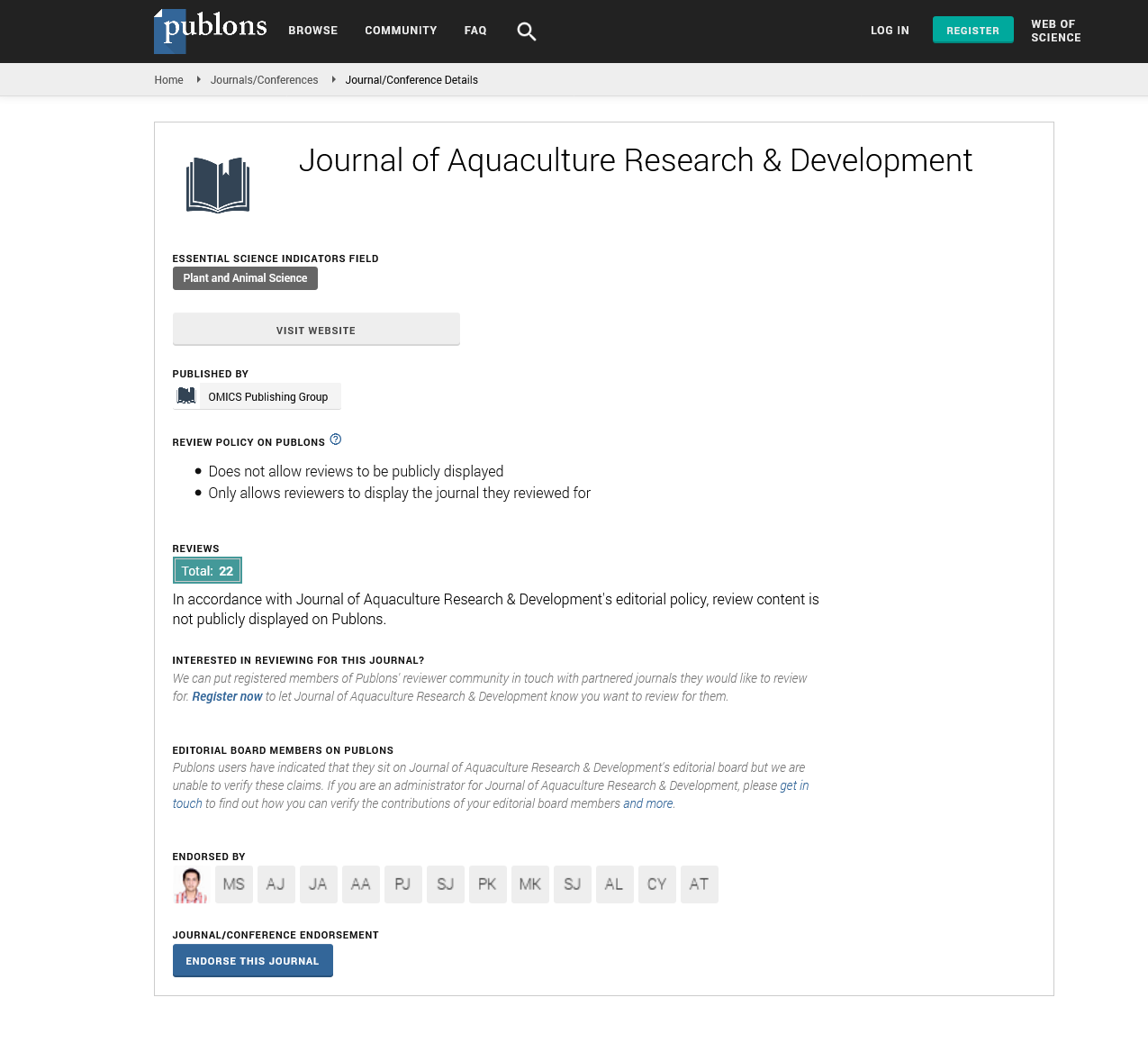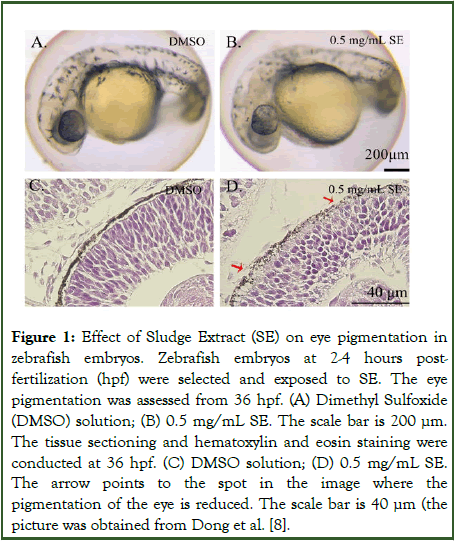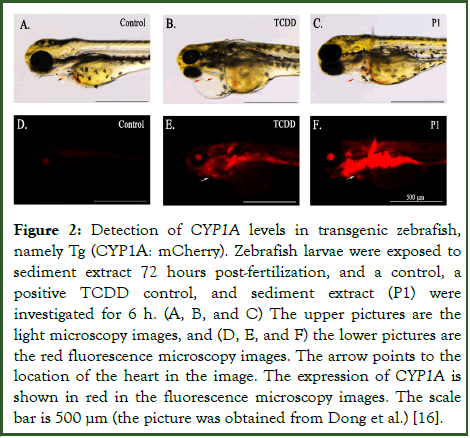Indexed In
- Online Access to Research in the Environment (OARE)
- Open J Gate
- Genamics JournalSeek
- JournalTOCs
- Scimago
- Ulrich's Periodicals Directory
- Access to Global Online Research in Agriculture (AGORA)
- Electronic Journals Library
- Centre for Agriculture and Biosciences International (CABI)
- RefSeek
- Directory of Research Journal Indexing (DRJI)
- Hamdard University
- EBSCO A-Z
- OCLC- WorldCat
- Scholarsteer
- SWB online catalog
- Virtual Library of Biology (vifabio)
- Publons
- MIAR
- University Grants Commission
- Euro Pub
- Google Scholar
Useful Links
Share This Page
Journal Flyer

Open Access Journals
- Agri and Aquaculture
- Biochemistry
- Bioinformatics & Systems Biology
- Business & Management
- Chemistry
- Clinical Sciences
- Engineering
- Food & Nutrition
- General Science
- Genetics & Molecular Biology
- Immunology & Microbiology
- Medical Sciences
- Neuroscience & Psychology
- Nursing & Health Care
- Pharmaceutical Sciences
Short Communication - (2025) Volume 16, Issue 3
Research Progress Using Zebrafish as A Model Animal to Monitor Pollution in Bohai Bay
Liu Chunyu, Dong Wenjing, Xue Jiangdong* and Dong WuReceived: 17-Jan-2025, Manuscript No. JARD-24-24635; Editor assigned: 22-Jan-2025, Pre QC No. JARD-24-24635 (PQ); Reviewed: 05-Feb-2025, QC No. JARD-24-24635; Revised: 05-Jun-2025, Manuscript No. JARD-24-24635 (R); Published: 12-Jun-2025, DOI: 10.35248/2155-9546.25.16.968
Abstract
Zebrafish have many advantages as model animals, such as small size, easy operation, sensitivity to chemicals, and abundant transgenic models. Recent studies have used zebrafish as a model animal to select available biomarkers for monitoring pollution in the surrounding areas of Bohai Bay, and the studies have made significant research progress. Notable, CYP1A expression and eye pigmentation serve as biological indicators, which can be used to quickly and widely monitor the environmental quality and ecological health status around Bohai Bay. This review summarizes the research progress on the use of zebrafish as a model animal for monitoring pollution in Bohai Bay. The study verified that the use of CYP1A transgenic zebrafish is a rapid, sensitive, cost-effective method that can be used to monitor harmful substances in the environment.
Keywords
Zebrafish; CYP1A; Pigmentation; Bio-assess; Bohai Bay pollutionDescription
Industrial development has led to increased sewage discharge into rivers, which has released a large amount of pollutants into Bohai Bay. Ecological environmental risk assessment and water quality management of the marine environment have become increasingly important [1]. Bohai Bay is a typical shallow sea basin in northeastern China and is a very important marine ecosystem in northern China. However, its proximity to many industrial cities, coupled with over 50 rivers that directly flow into Bohai Bay, results in the inflow of a large amount of industrial, agricultural, and domestic wastewater. In addition, near Bohai Bay, there are oil fields, such as Bohai oilfield, Jidong oilfield, and Dagang oilfield, which could potentially result in the pollution of Bohai Bay [2]. Therefore, the pollution status of Polycyclic Aromatic Hydrocarbons (PAHs) and dioxinlike persistent environmental pollutants in Bohai Bay has emerged as a prominent research topic in recent years and is an environmental issue of great concern.
Pollutants are produced during the combustion and incomplete combustion processes of straw and wood burning and coal combustion and are emitted from vehicle exhausts, and wastewater emitted by refineries contains large amounts of PAHs. Polycyclic aromatic hydrocarbons are a group of organic pollutants that are composed of fused aromatic ring carbon and hydrogen atoms, and most of them originate from human activities. In addition to PAHs, the oil extraction, petrochemical, coal processing, and transportation industries around Bohai Bay are very active. Industrial development may also be accompanied by the release of persistent pollutants, which directly or indirectly enter the waters of Bohai Bay. These Persistent Organic Pollutants (POPs) will remain in the waters and sludge around Bohai Bay for a long time, and then contaminate aquatic organisms and humans through the food chain. Polycyclic aromatic hydrocarbons and POPs (such as dioxins) are carcinogenic, mutagenic, and teratogenic. Additionally, Dong et al. found that the sludge from the discharge outlet of a sewage treatment plant in Bohai Bay contained POPs (mainly H7CDF, O8CDF, and O8CDD) and PAHs (including fluorene, pyrene, and phenanthrene) [3].
Zebrafish (Danio rerio) embryos have been used as animal models to perform biological monitoring and mechanism studies when exposed to 0.1, 0.3, 0.5, 1, and 5 mg/mL of Sludge Extract (SE) from 2 to 4 h post-fertilization (hpf) to 120 hpf. The results showed that SE can increase the mortality of zebrafish larvae and decrease the hatchability in a concentration-dependent manner [4]. The morphological examination found that SE significantly reduced eye pigmentation (Figure 1) and larval motility. More interestingly, SE reduced the triiodothyronine content and affected the expression of thyroid hormone-related genes. Furthermore, individual PAHs, namely fluorene, pyrene, and phenanthrene, also caused morphological changes in the zebrafish, indicating that zebrafish eye pigmentation can be used as an indicator of PAH pollution [5-7].
Figure 1: Effect of Sludge Extract (SE) on eye pigmentation in zebrafish embryos. Zebrafish embryos at 2-4 hours postfertilization (hpf) were selected and exposed to SE. The eye pigmentation was assessed from 36 hpf. (A) Dimethyl Sulfoxide (DMSO) solution; (B) 0.5 mg/mL SE. The scale bar is 200 μm. The tissue sectioning and hematoxylin and eosin staining were conducted at 36 hpf. (C) DMSO solution; (D) 0.5 mg/mL SE. The arrow points to the spot in the image where the pigmentation of the eye is reduced. The scale bar is 40 μm (the picture was obtained from Dong et al. [8].
Dioxin-like POPs pose a significant environmental challenge as persistent organic pollutants that are extremely resistant to degradation and have a high toxicity. One prominent member of this group is 2,3,7,8-Tetrachlorodibenzo-p-Dioxin (TCDD), which is mediated by the Aryl Hydrocarbon Receptor (AHR) and strongly induces zebrafish or medaka fish (Oryzias latipes) cell pigment P4501 A. Upon binding with TCDD, AHR translocates to the nucleus and dimerizes with the Aryl Hydrocarbon Receptor Nuclear Translocator (ARNT). The AHR/ARNT heterodimer interacts with the AHR response element, influencing the transcription of multiple genes, including cytochrome P450 1A (CYP1A). The TCDD-dependent induction of CYP1A has been demonstrated in zebrafish cell cultures, whole larvae, and adult zebrafish [9].
Cytochrome P450 enzymes are an important enzyme family that is involved in pollutant metabolism and is a biomarker for monitoring environmental pollution. The CYP1A enzyme plays an important role in marine biological monitoring and is widespread in marine organisms, especially in the liver tissues of fish, crustaceans, and other marine species. The main function of the CYP1A enzyme is to participate in the metabolic transformation of exogenous compounds. It catalyzes the oxidation reaction of harmful substances, such as PAHs and POPs, converting them into metabolites that are easier to excrete, and thereby reducing their toxicity. Therefore, monitoring the activity level of the CYP1A enzyme in marine organisms serves as an indicator for assessing exposure to harmful substances in marine ecosystems. By detecting the activity of the CYP1A enzyme in fish and other marine organisms, the presence of harmful substances in the environment and their impact on marine organisms can be determined [10].
In light of the importance of CYP1A, Tg (cyp1a: gfp) medaka and Tg (cyp1a: gfp) zebrafish were established. When Tg (cyp1a: gfp) zebrafish larvae were treated with dioxin (TCDD) at 94 hpf, Green Fluorescent Protein (GFP) was mainly produced in the kidneys, liver, and intestines. The lowest observed effective concentration of TCDD was estimated to be 0.1 pM. Similarly, in the Tg (cyp1a: nls-egfp) transgenic zebrafish that were established by Kim et al. a very low concentration (10 pM) of TCDD induced the expression of GFP in the zebrafish larvae 72 hpf. Moreover, g (cyp1a-12DRE: egfp) transgenic zebrafish can also detect TCDD at 3.1 pM. Furthermore, Pei et al. established CYP1A transgenic zebrafish tg (T-CYP1a: mCherry). The expression level of CYP1A in the CYP1A transgenic zebrafish model has also been used to detect dioxin-like POPs in contaminated soil, sludge, and water. Therefore, because zebrafish have a short life cycle, a high reproductive capacity, and transparent embryos, they are extremely sensitive to pollutants and can be used to quickly assess the pollution status. These characteristics make this animal model an ideal tool for highthroughput screening and the dynamic observation of pollutants [11,12].
Dong et al. used the CYP tg (T-CYP1a: mCherry) transgenic zebrafish model to evaluate the sediments near and around an industrial wastewater treatment plant in Bohai Bay. After 72 hpf, the zebrafish larvae were exposed to sediment extract (P1) for 6 h (TCDD was the positive control). It was found that P1 caused significant upregulation of fluorescence expression in the CYP1A transgenic zebrafish (mainly in the liver and intestines), and the pattern of the response was very similar to that of TCDD [13]. Subsequent chemical analysis confirmed that P1 contained dioxin-like contaminants (H7CDF, O8CDF, and O8CDD; Figure 2A-B). The study further verified that the use of CYP1A transgenic zebrafish as a bioassay is a rapid, sensitive, cost-effective method that can be used to evaluate suspected dioxins and conduct high-throughput screening of sediments. The study also showed that the combination of high-throughput large-area biological detection methods and precise and quantitative chemical analysis can achieve effective environmental monitoring [14,15].
Figure 2: Detection of CYP1A levels in transgenic zebrafish, namely Tg (CYP1A: mCherry). Zebrafish larvae were exposed to sediment extract 72 hours post-fertilization, and a control, a positive TCDD control, and sediment extract (P1) were investigated for 6 h. (A, B, and C) The upper pictures are the light microscopy images, and (D, E, and F) the lower pictures are the red fluorescence microscopy images. The arrow points to the location of the heart in the image. The expression of CYP1A is shown in red in the fluorescence microscopy images. The scale bar is 500 μm (the picture was obtained from Dong et al.) [16].
Conclusion
The extensive industrial development surrounding Bohai Bay has led to significant pollution, particularly from Polycyclic Aromatic Hydrocarbons (PAHs) and dioxin-like Persistent Organic Pollutants (POPs), posing serious ecological and public health threats. These pollutants originate from various sources, including industrial discharge, vehicle emissions, coal combustion, and oilfield operations. The persistence and toxicity of these contaminants result in their accumulation in sediments and bioaccumulation in aquatic organisms, ultimately affecting human health through the food chain. Zebrafish and medaka models, especially transgenic lines expressing CYP1A reporters, have proven to be valuable bioindicators for detecting and monitoring the presence and biological effects of PAHs and POPs. Their sensitivity to even low concentrations of these pollutants allows for early and effective environmental risk assessment. The integration of bioassays with high-throughput biological detection and precise chemical analysis provides a comprehensive, rapid, and cost-effective approach for monitoring marine pollution in sensitive ecosystems like Bohai Bay. These findings underscore the urgent need for enhanced environmental protection measures, stricter industrial waste management, and continuous monitoring to safeguard marine biodiversity and public health.
References
- An L, Hu J, Yang M, Zheng B, Wei A. CYP1A mRNA expression in redeye mullets (Liza haematocheila) from Bohai Bay, China. Mar Pollut Bull. 2011;62(4):718-725.
[Crossref] [Google Scholar] [PubMed]
- Anderson AL, Dubanksy BD, Wilson LB, Tanguay RL, Rice CD. Development and Applications of a Zebrafish (Danio rerio) CYP1A-Targeted Monoclonal Antibody (CRC4) with Reactivity across Vertebrate Taxa: Evidence for a Conserved CYP1A Epitope. Toxics 2011;10(7):404.
[Crossref] [Google Scholar] [PubMed]
- Dong W, Teraoka H, Yamazaki K, Tsukiyama S, Imani S. 2,3,7,8-tetrachlorodibenzo-p-dioxin toxicity in the zebrafish embryo: local circulation failure in the dorsal midbrain is associated with increased apoptosis. Toxicol Sci. 2002;69(1):191-201.
[Crossref] [Google Scholar] [PubMed]
- Dong W, Hintossn DE, Kullman SW. TCDD disrupts hypural skeletogenesis during medaka embryonic development. Toxicol Sci. 2002;125(1):91-104.
[Crossref] [Google Scholar] [PubMed]
- Dong W, Wang F, Fang M, Wu J, Wang S. Use of biological detection methods to assess dioxin-like compounds in sediments of Bohai Bay, China. Ecotoxicol Environ Saf. 2019;173:339-346.
[Crossref] [Google Scholar] [PubMed]
- Ferreira JP, Miskolci R. Reservoirs of venereal diseases,""MSM"" and ""PWA"": Continuities, ruptures and temporalities in the production of bioidentities in the context of the AIDS epidemic. Ciencia Saude Colet. 2022;27:3461-3474.
[Crossref] [Google Scholar] [PubMed]
- Genz N, Meincke SM, Carret ML, Correa AC, Alves CN. Sexually transmitted diseases: Knowledge and sexual behavior of adolescents. Texto Contexto Enferm. 2017;26:e5100015.
- Hinrichsen S. Venereal diseases: What they are, symptoms and treatment. Tua Saude. 2022.
- Magalhaes EF, dos Santos FG, de Barros NB, Souza LF. Jovens adolescentes: Os fatores de risco das infeccoes sexualmente transmissiveis e fatores protetivos Young adoscents: The factors of risk of sexually transmitted and protect factors. Brazilian J Dev. 2021;7(12):114491.
- Martins GD, Theophilo CR. Methodology of scientific research. São Paulo: Atlas. 2009:143-164.
- Newman L, Rowley J, Vander Hoorn S, Wijesooriya NS, Unemo M, Low N, et al. Global estimates of the prevalence and incidence of four curable sexually transmitted infections in 2012 based on systematic review and global reporting. PLoS One. 2015;10(12):e0143304.
[Crossref]
- World Health Organization (2024). Sexually Transmitted Infections (STIs).
- Osman M, Hamat RA. Assessing the knowledge level, attitudes, risky behaviors and preventive practices on sexually transmitted diseases among university students as future healthcare providers in the central zone of Malaysia: A cross-sectional study. Int J Environ Res Public Health. 2017;14(2):E159.
[Crossref] [Google Scholar] [PubMed]
- Pinto VM, Basso CR, Barros CR, Gutierrez EB. Factors associated with sexually transmitted infections: A population survey in the city of Sao Paulo, Brazil. Sci Public Health. 2018;23:2423-2432.
- Ramos MC, Sardinha JC, Alencar HD, Aragon MG, Lannoy LH. Brazilian Protocol for Sexually Transmitted Infections, 2020: Infections that cause genital ulcers. Epidemiol Serv Saude. 2021;54(suppl 1):e2020663.
[Crossref] [Google Scholar] [PubMed]
- Spindola T, Santana RS, Antunes RF, Machado YY, Moraes PC. Prevention of sexually transmitted infections in the sexual scripts of young people: Differences according to gender. Cien Saude Colet. 2021;26:2683-2692.
[Crossref] [Google Scholar] [PubMed]
Citation: Chunyu L, Wenjing D, Jiangdong X, Wu D (2025) Research Progress Using Zebrafish as a Model Animal to Monitor Pollution in Bohai Bay. J Aquac Res Dev. 16:967.
Copyright: © 2025 Chunyu L, et al. This is an open access article distributed under the terms of the Creative Commons Attribution License, which permits unrestricted use, distribution, and reproduction in any medium, provided the original author and source are credited.



